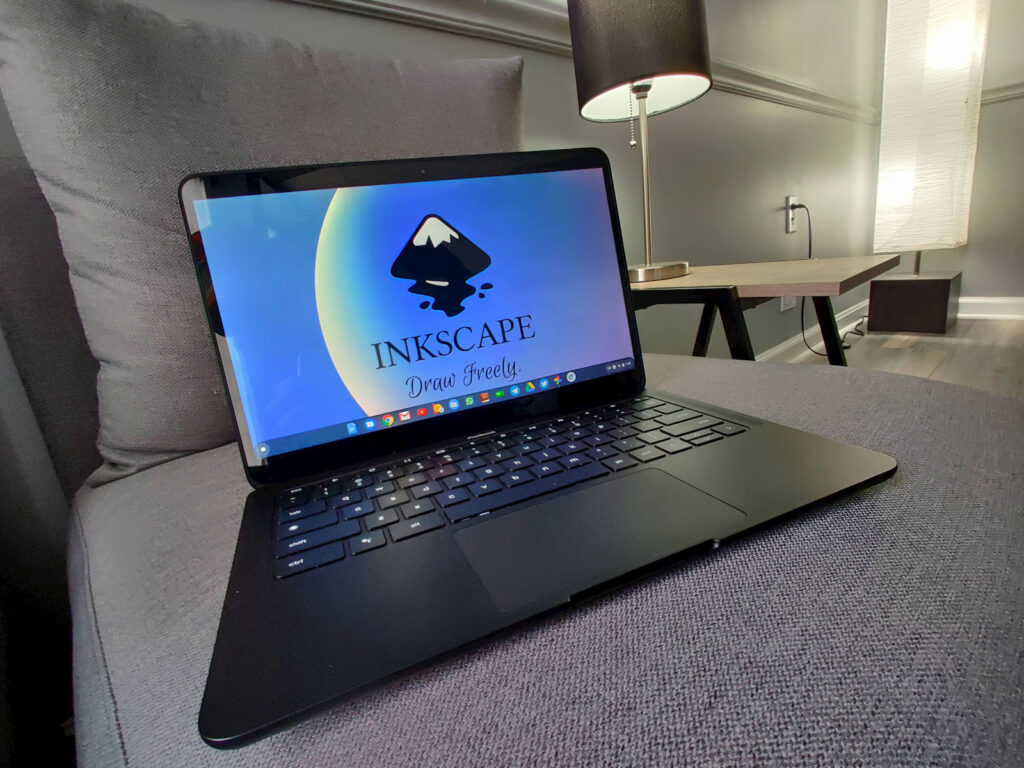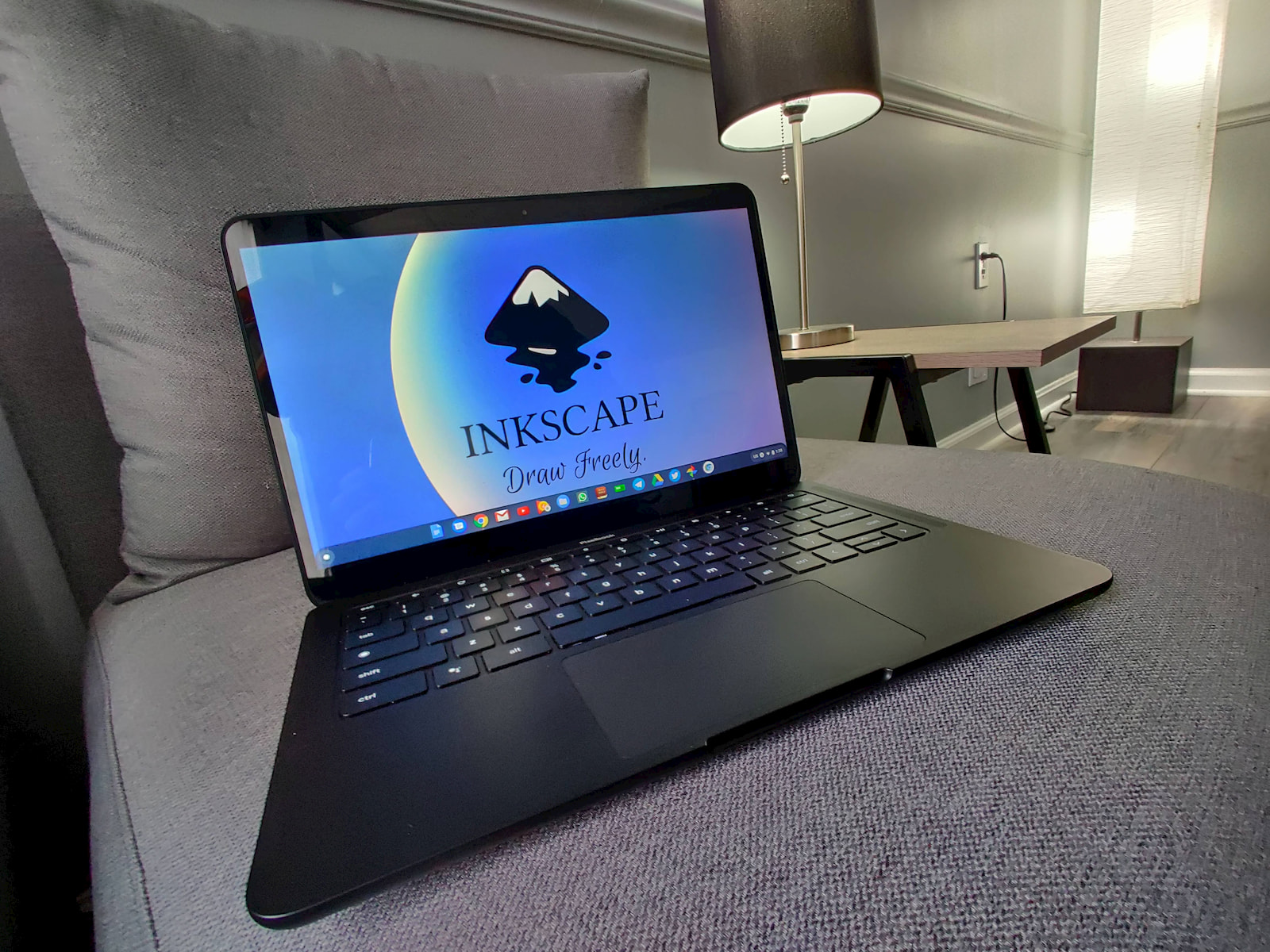
Inkscape on Chromebook: A Comprehensive Guide for 2024
For graphic designers, hobbyists, and educators, the question of whether Inkscape can run effectively on a Chromebook is a crucial one. Inkscape, a powerful and free vector graphics editor, offers a compelling alternative to paid software like Adobe Illustrator. However, Chromebooks, known for their simplicity and cloud-based functionality, present unique challenges. This guide provides a detailed exploration of how to install and run Inkscape on a Chromebook in 2024, covering various methods, troubleshooting tips, and performance expectations.
Understanding the Challenges
Chromebooks are designed primarily for web-based applications. They traditionally lack the robust operating system capabilities needed to run desktop applications like Inkscape natively. However, advancements in Chrome OS have opened new possibilities. The primary hurdle is that Inkscape is designed for Linux, Windows, or macOS environments, not Chrome OS directly.
Methods for Running Inkscape on a Chromebook
Several methods allow you to run Inkscape on a Chromebook, each with its own set of advantages and disadvantages:
Using Linux (Beta)
The most straightforward and recommended approach is to use the built-in Linux (Beta) feature on your Chromebook. This feature allows you to install and run Linux applications alongside Chrome OS. Here’s how to set it up:
- Enable Linux (Beta): Go to Settings > Linux (Beta) > Turn on. Follow the on-screen instructions to set up your Linux environment.
- Update the Linux Environment: Open the Terminal app and run the following commands:
sudo apt updatesudo apt upgrade- Install Inkscape: In the Terminal, run the command:
sudo apt install inkscape - Launch Inkscape: Once the installation is complete, you can launch Inkscape from the Chrome OS launcher.
This method provides the most seamless experience, as Inkscape runs directly on the Chromebook‘s hardware. However, performance can still be limited by the Chromebook‘s specifications.
Using a Virtual Machine (VM)
Another option is to use a virtual machine to run a full Linux distribution, within which you can install Inkscape. This method is more complex but can offer better performance if you allocate sufficient resources to the VM. Popular VM options include:
- VMware Workstation Player (via a Linux VM): Requires installing a Linux distribution like Ubuntu within VMware.
- VirtualBox (via a Linux VM): Similar to VMware, VirtualBox allows you to run a full Linux environment.
Setting up a VM involves downloading and installing the VM software, downloading a Linux ISO image, and configuring the VM settings. After installing Linux in the VM, you can install Inkscape using the same sudo apt install inkscape command in the terminal.
While VMs provide more control over the environment, they can be resource-intensive and may not be ideal for Chromebooks with limited RAM or processing power.
Using a Remote Desktop
A third option is to use a remote desktop application to access Inkscape running on another computer (e.g., a Windows or Linux desktop). This method allows you to leverage the processing power of a more powerful machine while using your Chromebook as a thin client. Popular remote desktop options include:
- Chrome Remote Desktop: A simple and free option from Google.
- TeamViewer: A popular remote desktop software with a free version for personal use.
- AnyDesk: Another remote desktop option known for its speed and performance.
To use a remote desktop, you need to install the remote desktop server software on the host computer (the one running Inkscape) and the remote desktop client app on your Chromebook. This method relies heavily on a stable and fast internet connection.
Performance Considerations
The performance of Inkscape on a Chromebook depends on several factors:
- Chromebook Specifications: RAM, CPU, and storage space all play a crucial role. Chromebooks with at least 4GB of RAM and a decent processor (e.g., Intel Celeron or higher) will generally provide a better experience.
- Inkscape Complexity: Complex vector graphics with many layers and effects will require more processing power.
- Method Used: Running Inkscape directly via Linux (Beta) usually offers better performance than using a VM, but this can vary depending on VM configuration. Remote desktop performance depends heavily on network conditions.
Expect some lag or slowdowns when working with large or complex files, especially on lower-end Chromebooks. Closing unnecessary applications and browser tabs can help free up resources.
Troubleshooting Common Issues
Here are some common issues you might encounter when running Inkscape on a Chromebook and how to troubleshoot them:
- Inkscape Not Launching: Ensure that the Linux environment is properly set up and that Inkscape is correctly installed. Try restarting the Chromebook.
- Slow Performance: Reduce the complexity of your Inkscape projects, close unnecessary applications, and consider upgrading your Chromebook‘s RAM if possible.
- Graphics Glitches: Update the Linux graphics drivers. You can try running
sudo apt update && sudo apt upgradein the terminal. - File Compatibility Issues: Ensure that you are using the latest version of Inkscape and that your file formats are compatible.
Alternatives to Inkscape
If running Inkscape on your Chromebook proves too challenging, consider exploring alternative vector graphics editors that are designed for web-based use:
- Vectr: A free, browser-based vector graphics editor with a user-friendly interface.
- Gravit Designer: A more advanced browser-based option with a wider range of features.
- Boxy SVG: A powerful SVG editor that can be used offline as a Progressive Web App (PWA).
These alternatives may not offer the same level of functionality as Inkscape, but they can be a viable option for simpler vector graphics tasks. [See also: Best Vector Graphics Editors for Chromebooks]
Conclusion
Running Inkscape on a Chromebook is possible, thanks to advancements in Chrome OS. The Linux (Beta) feature provides the most convenient way to install and run Inkscape. However, performance can vary depending on the Chromebook‘s specifications and the complexity of your projects. By understanding the challenges, exploring different methods, and troubleshooting common issues, you can leverage the power of Inkscape on your Chromebook. If you still find the experience unsatisfactory, consider exploring web-based alternatives that are specifically designed for the Chrome OS environment. The question of whether Inkscape is a good fit for your Chromebook depends on your specific needs and expectations. With the right approach, you can unlock the potential of vector graphics editing on your portable device. Furthermore, consider the cloud storage options available for Chromebooks to ensure your Inkscape projects are safely backed up and accessible across devices. [See also: Cloud Storage Solutions for Graphic Designers] Remember to regularly update both Chrome OS and the Linux environment to benefit from the latest performance improvements and security patches, ensuring a smoother and more secure experience using Inkscape on your Chromebook. Finally, explore online forums and communities dedicated to Inkscape and Chromebooks to find valuable tips, tricks, and solutions to common problems. [See also: Inkscape Community Forums]

